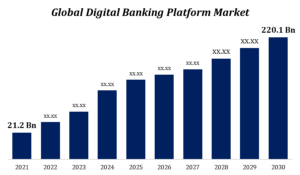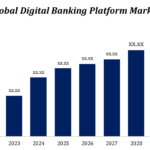The Intersection of Fintech and E-commerce: Streamlining Online Payments and Transactions
The rapid evolution of fintech and the growing prominence of e-commerce have intersected to revolutionize the way we make online payments and conduct transactions. This dynamic collaboration is not only enhancing the convenience and security of digital commerce but also reshaping the entire shopping experience for consumers and businesses alike. In this article, we will explore the symbiotic relationship between fintech and e-commerce, uncovering how their integration is streamlining online payments and transactions.
Fintech and E-commerce Synergy:
- Seamless Payment Processing: Fintech solutions have streamlined the payment process for e-commerce platforms, offering customers a seamless checkout experience.
- Digital Wallets and Mobile Payments: Fintech has introduced digital wallets and mobile payment options, enabling consumers to make transactions with a tap on their smartphones.
- Cryptocurrency Adoption: Some e-commerce platforms now accept cryptocurrencies as a form of payment, facilitated by fintech developments in blockchain technology.
- Cross-Border Transactions: Fintech has made cross-border transactions more accessible and affordable, reducing currency exchange fees and delays.
Benefits for E-commerce:
- Enhanced Customer Experience: Fintech innovations enable smoother transactions, reducing checkout friction and improving user satisfaction.
- Reduced Abandonment Rates: Simplified payment processes can lead to lower shopping cart abandonment rates, increasing conversion rates for e-commerce businesses.
- Secure Transactions: Fintech offers advanced security measures, protecting sensitive payment data and reducing the risk of fraud.
- Global Reach: E-commerce businesses can tap into a global customer base with the help of fintech-enabled cross-border payment solutions.
Benefits for Fintech:
- Business Growth Opportunities: Integration with e-commerce platforms opens new revenue streams for fintech companies, especially in payment processing.
- Data Insights: Fintech platforms can gather valuable transaction data from e-commerce transactions, enhancing their analytics and customer insights.
- Partnerships and Collaborations: Fintech companies can collaborate with e-commerce players to offer integrated solutions that benefit both parties and the end-users.
Challenges and Considerations:
- Security Concerns: Ensuring robust security measures to protect payment data and prevent breaches is crucial for both fintech and e-commerce.
- Regulatory Compliance: Fintech and e-commerce must navigate complex regulatory frameworks to ensure adherence to financial and consumer protection regulations.
- User Adoption: Encouraging consumers to adopt new payment methods, such as digital wallets or cryptocurrencies, can be a challenge.
Future Outlook:
- Biometric Authentication: Fintech is likely to explore more advanced biometric authentication methods to enhance the security of online transactions.
- AI-Powered Personalization: Integrating AI into fintech and e-commerce could enable more personalized shopping experiences and offer tailored financial solutions.
- Voice Commerce: Voice-activated devices could become a key interface for making purchases, reshaping the e-commerce and fintech landscape.
The convergence of fintech and e-commerce is reshaping the digital economy, revolutionizing how consumers shop and pay for goods and services online. With innovations ranging from mobile payments to cryptocurrency adoption, this collaboration is enhancing user experiences, streamlining transactions, and driving business growth. As technology continues to advance, the partnership between fintech and e-commerce will likely result in even more innovative solutions that redefine the way we interact with digital commerce, making it more convenient, secure, and interconnected than ever before.
Top of Form


































